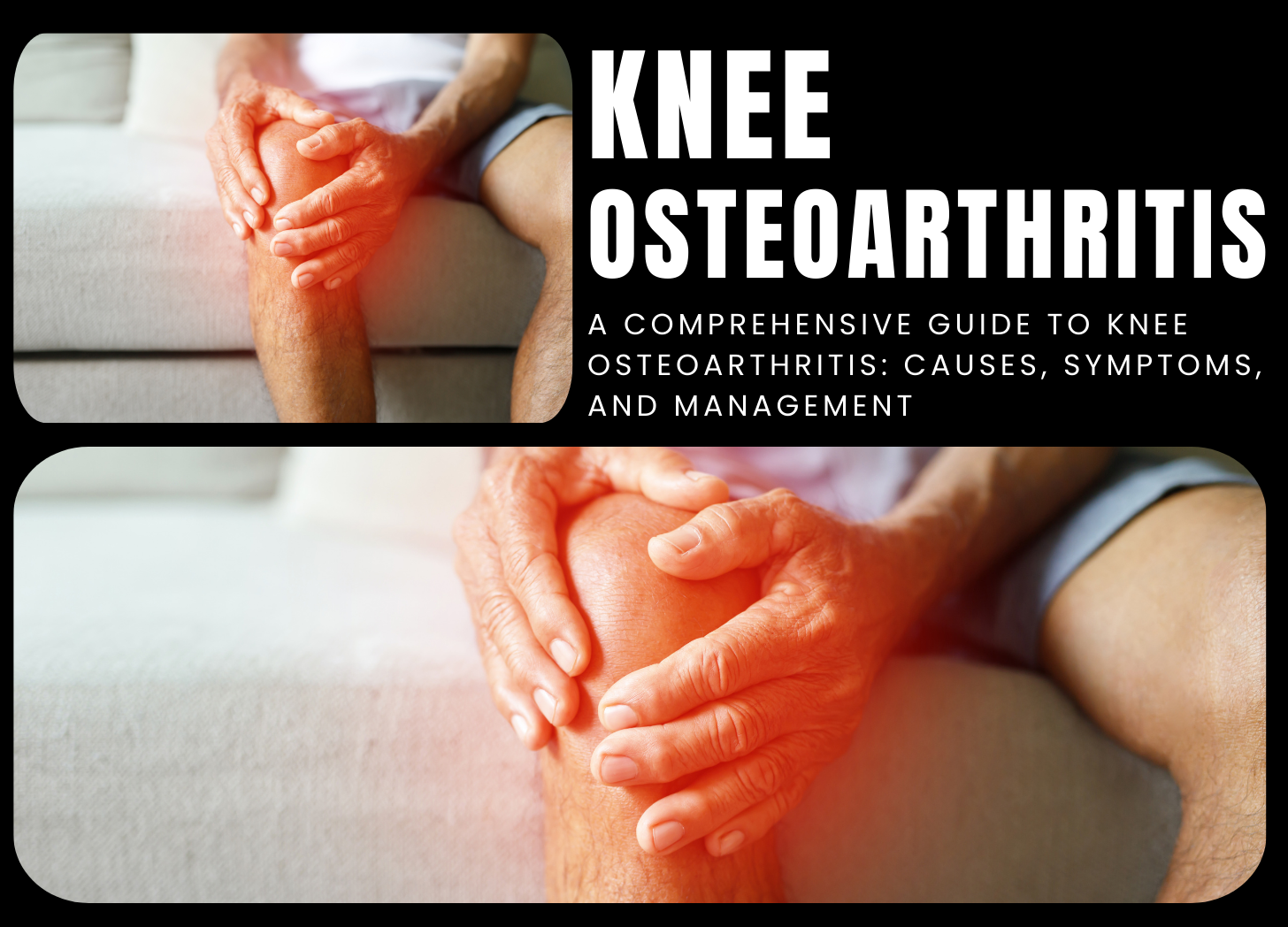Knee Osteoarthritis: Causes, Symptoms, and Treatment
Knee osteoarthritis (OA) is a prevalent degenerative joint condition characterized by the gradual deterioration of cartilage within the knee joint. This breakdown leads to pain, stiffness, and restricted movement. Cartilage serves as a cushion between bones, allowing for smooth joint movement. As cartilage erodes, bones may rub together, causing pain, inflammation, and the formation of bone spurs. This condition can significantly impact quality of life, limiting daily activities and mobility.
Causes
The precise cause of knee osteoarthritis is not fully understood, but it is believed to result from a combination of genetic, biomechanical, and environmental factors. Key risk factors include:
- Age: The risk of developing osteoarthritis increases with age due to natural joint wear and tear.
- Obesity: Excess weight places additional stress on the knee joints.
- Previous Joint Injuries: Past injuries or surgeries can predispose individuals to osteoarthritis.
- Repetitive Stress: Activities involving repeated knee stress, such as jogging or jumping, may contribute to the condition.
- Medical Conditions: Diseases such as rheumatoid arthritis or metabolic disorders can increase the risk of osteoarthritis.
Symptoms
Symptoms of knee osteoarthritis often develop gradually and may include:
- Pain: Typically experienced in the knee joint, especially after periods of inactivity or prolonged use.
- Stiffness: Notable in the morning or after sitting for long periods.
- Edema: Swelling in the knee joint.
- Tenderness: Discomfort upon touching the knee.
- Grinding Sensation (Crepitus): A feeling of grinding or crunching in the knee.
- Instability: A sensation that the knee may give way.
These symptoms can affect mobility and daily functions, making activities like walking, climbing stairs, or performing routine tasks challenging.
Diagnosis
Diagnosing knee osteoarthritis involves a combination of:
- Medical History and Physical Examination: To assess symptoms and their impact.
- Imaging Tests: X-rays or magnetic resonance imaging (MRI) to evaluate joint damage and rule out other causes of knee pain.
- Blood Tests: To exclude inflammatory types of arthritis, such as rheumatoid arthritis.
Early detection and intervention are crucial for managing knee osteoarthritis and preventing further joint damage.
Treatment
Treatment for knee osteoarthritis aims to relieve pain, improve joint function, and slow disease progression. Options include:
- Conservative Treatments:
- Weight Loss: Reducing body weight to decrease stress on the knee joints.
- Exercise and Physical Therapy: Strengthening the muscles around the knee to improve stability and function.
- Nonsteroidal Anti-Inflammatory Drugs (NSAIDs): To reduce pain and inflammation.
- Corticosteroid Injections: To alleviate pain and inflammation.
- Viscosupplementation: Injection of lubricating fluid into the joint to improve movement.
- Braces and Orthotic Inserts: To support the knee and reduce stress on the joint.
- Surgical Options:
- Knee Arthroscopy: A minimally invasive procedure to remove damaged tissue.
- Osteotomy: Realignment of the knee joint to redistribute weight and relieve pain.
- Knee Replacement Surgery: Partial or total replacement of the damaged joint surfaces with artificial components to restore function and reduce pain.
Conclusion
Knee osteoarthritis is a common condition marked by the breakdown of cartilage in the knee joint, leading to pain, stiffness, and restricted movement. While managing knee osteoarthritis can be challenging, early diagnosis, conservative treatments, and, if necessary, surgical interventions can help alleviate symptoms and enhance quality of life.
References
- Arthritis Foundation. (2022). Osteoarthritis of the Knee. Retrieved from Arthritis Foundation
- Mayo Clinic. (2022). Osteoarthritis. Retrieved from Mayo Clinic

Post a Comment